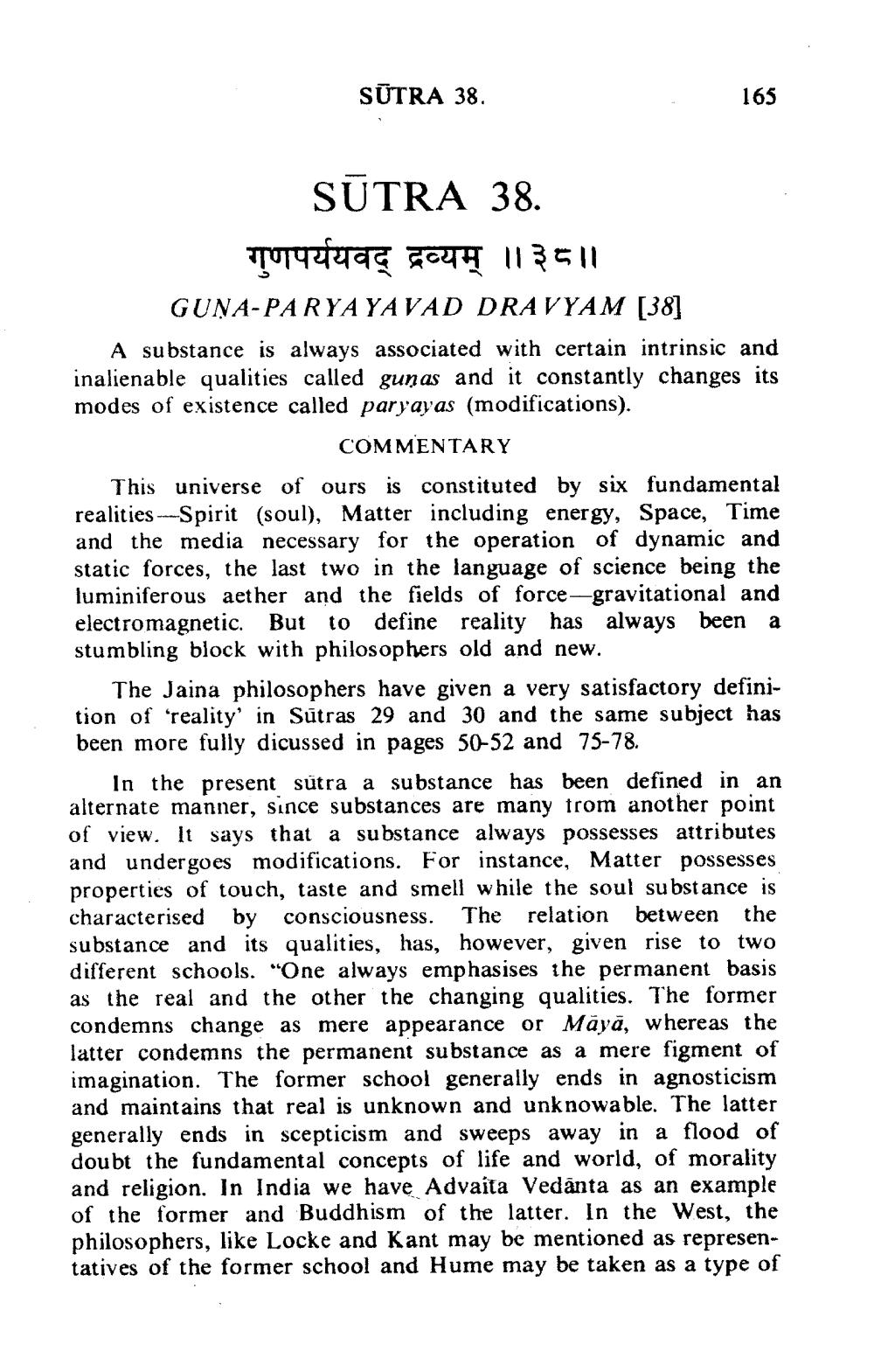________________
SUTRA 38.
165
SUTRA 38.
Tofag go44 113511 GUŅA-PARYAYAVAD DRAVYAM [38] A substance is always associated with certain intrinsic and inalienable qualities called guņas and it constantly changes its modes of existence called paryayas (modifications).
COMMENTARY This universe of ours is constituted by six fundamental realities --Spirit (soul), Matter including energy, Space, Time and the media necessary for the operation of dynamic and static forces, the last two in the language of science being the luminiferous aether and the fields of force-gravitational and electromagnetic. But to define reality has always been a stumbling block with philosophers old and new
The Jaina philosophers have given a very satisfactory definition of reality in Sūtras 29 and 30 and the same subject has been more fully dicussed in pages 50-52 and 75-78.
In the present sutra a substance has been defined in an alternate manner, since substances are many trom another point of view. It says that a substance always possesses attributes and undergoes modifications. For instance, Matter possesses properties of touch, taste and smell while the soul substance is characterised by consciousness. The relation between the substance and its qualities, has, however, given rise to two different schools. "One always emphasises the permanent basis as the real and the other the changing qualities. The former condemns change as mere appearance or Māyā, whereas the latter condemns the permanent substance as a mere figment of imagination. The former school generally ends in agnosticism and maintains that real is unknown and unknowable. The latter generally ends in scepticism and sweeps away in a flood of doubt the fundamental concepts of life and world, of morality and religion. In India we have Advaita Vedānta as an example of the former and Buddhism of the latter. In the West, the philosophers, like Locke and Kant may be mentioned as representatives of the former school and Hume may be taken as a type of




